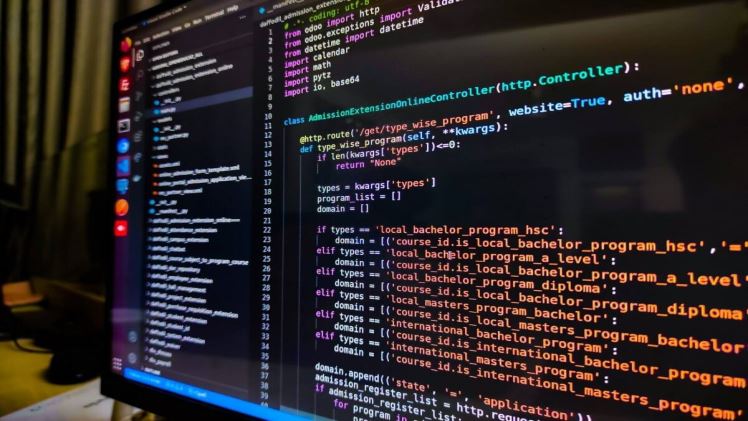Cracking the Code: The Power of Application Obfuscation

One of the most popular application security strategies to prevent application hacking is code obfuscation. It often takes care of your application’s most basic security requirements and is among the AppSec projects that security experts worldwide most highly suggest. This method often serves as the main line of protection against hacking efforts and protects against standard attacks.
- Code Obfuscation
The process of changing executable code so that it cannot be understood, interpreted, or executed is known as code obfuscation. The source code is obscured to the point that it is difficult for a third party to decipher, much less execute, it. Code obfuscation has no effect on the intended output of the code or the application’s end-user interface. It’s only a preventative measure to make the code worthless for any possible hackers who could get their hands on an application’s executable code.
- Why is it necessary to obfuscate codes?
Open-source apps are especially benefiting from code obfuscation since their code is far more vulnerable to hacking for private gain. Developers protect their product’s intellectual property against security risks, illegal access, and the discovery of application flaws by making their applications difficult to reverse engineer. This procedure limits unauthorized access to the source code and provides varying degrees of code security based on the obfuscation method used. When a code becomes obfuscated, time, money, and resources all work against you since the decompiled code becomes unreadable.
- Data Disguising
In order to prevent the hacker from knowing the true purpose of the program, this approach targets the data structures that are employed in the code. This might include changing how information is processed and stored in memory by the software in order to show the result. There are other variations of this method:
- Obfuscation of Aggregation
This modifies the program’s data storage structure. Arrays, for instance, may be subdivided into several sub-arrays, each of which can be accessed at various points throughout the program.
- Obfuscation of storage
This modifies the process of data storage in memory itself. To hide the true nature of variable behavior, developers might, for instance, alternate between storing variables locally and globally.
- The obfuscation order
This approach reorganizes the data without changing the program’s or snippet of code’s functionality. To do this, programmers create a distinct module that is called for each and every occurrence of the variable reference.
- Encryption using strings
All readable strings are encrypted using this approach, which produces unreadable code. When the software is run during runtime, they must be decrypted.
- Obfuscation of Control and Code Flow
The program’s goal is largely dependent on how control is transferred between different parts of the codebase. Usually the most profitable strategy to conceal evil at play is to obfuscate this flow. Hackers are kept at bay by this obfuscation technique, which prevents them from understanding how and why the code is following a certain flow.
- Debugging Obfuscation
Debug information is often useful for understanding important details about the program’s flow and for identifying program defects via source code decompilation and recompilation. Such identifying information should be hidden by altering their IDs, line numbers, or completely preventing access to debug information.
- Deal with Obfuscation
Attacks that take advantage of memory programming flaws have become frequent, particularly when it comes to non-memory safe languages like C and C++. Security vulnerabilities are often the consequence of errors such as uncontrolled array access. Reverse engineering becomes more challenging using the address obfuscation approach since the virtual addresses of the program’s data and code are randomly generated each time the altered code is run. Because of this, most memory-error attacks have a very low success rate and a non-deterministic consequence.
- Particular Coding
By employing this technique, programmers may encrypt texts using a unique algorithm and then offer a decoder function that allows the original code to be recovered.
- Argument Passing During Runtime
You may modify the program to have it expect arguments at runtime. To decrypt the variables, the user must possess both the code and the decryption key.
The security team may also decide to use many techniques at the same time in order to create a layered defensive strategy that shields apps from various security risks.
- Assessing the Obfuscation Method’s Quality
Several factors that affect the caliber of code transformation also affect the effectiveness of code obfuscation. The following elements taken together should indicate how well an obfuscation strategy is:
Power and tenacity
A code obfuscation is only as strong as its weakest component. Therefore, testing the amount of resistance the obfuscated code exhibits when de-obfuscation is attempted is the best method for determining the quality. The greater the obfuscation, the more time and effort must be invested to crack the code.
Distinctiveness and Strength
This demonstrates how much the obfuscated code deviates from the original. The source code may be made more complicated by using nesting levels, inheritance levels, and depth of control flows. This degree of difficulty is raised by the obfuscation of the code.
Covert
To fool the attacker about the obfuscated part, the obfuscated code must be indistinguishable from the original source code. For the attacker, reverse engineering becomes a challenging task as a result. This variable varies depending on the situation and is often essential to thwarting automated reverse engineering attempts.
Price
It is defined as the difference between the time and resources needed to run code that has been obfuscated and code that has not. When implementing an obfuscated code, some performance issues must be taken into account. The goal of cleverly obfuscated code should be to confuse the attacker while using safe approaches and avoiding needless expenditure of money or resources.
In summary
All things considered, code obfuscation by itself is insufficient to counter sophisticated security attacks. Reverse engineering is not impossible despite the difficulty of deobfuscating code due to the availability of automated tools and hacker knowledge.
Code obfuscation is thus not a one-stop shop for all application security requirements. The development team may use several code obfuscation strategies to safeguard their code in an untrusted environment, depending on the application’s nature, security requirements, and performance benchmark. These should be carried out while weighing the benefits and drawbacks of each method. When combined with RASP technologies such as AppSealing, it functions as a potent countermeasure against modern security risks.

